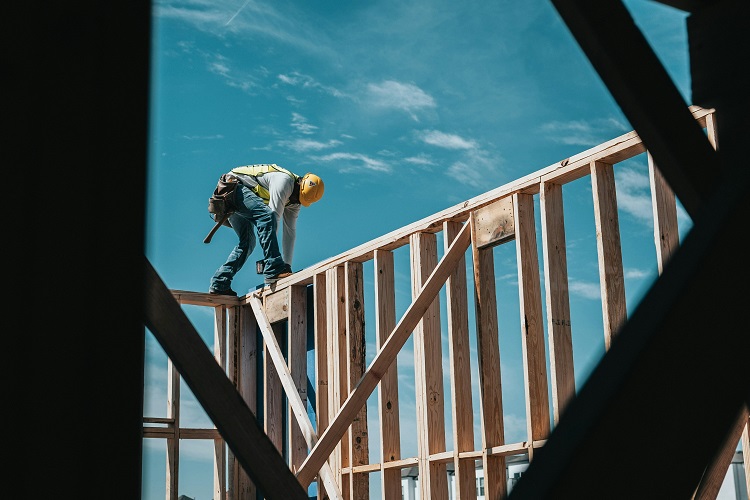Since 2021, the United States has undergone a substantial construction upsurge, marking a new era of economic growth and industrial expansion.
This period has witnessed a multitude of construction endeavors, collectively valued at more than $500 billion, with each project exceeding the billion-dollar milestone.
These projects encompass a range of industries, such as semiconductor manufacturing, battery production, electric vehicle facilities, and advancements in environmental technology, Construction Today reports.
The momentum in the construction sector is expected to continue, with experts predicting $60 billion in annual contracts for plant manufacturers by 2030. This thriving industry has spurred growth in related sectors, driving innovation, job creation, and economic development.
Here, we explore five flourishing sectors thanks to the booming construction industry.
Table of Contents
Building Materials and Supplies
As construction projects multiply, the demand for building materials and supplies skyrockets. This sector encompasses everything from basic materials like cement, steel, and lumber to more specialized products like insulation, roofing, and windows.
Companies within this industry are experiencing considerable growth, as highlighted by a Statista report. In 2022, sales by building material and supplies dealers in the United States nearly reached $446 billion.
This marked an increase of about $40 billion from the previous year. Since 2010, sales in this sector have generally trended upward.
Furthermore, innovations in sustainable materials, like recycled steel and eco-friendly insulation, are gaining momentum due to the construction industry’s shift towards greener practices.
Heavy Equipment and Machinery
The construction boom has fueled the need for heavy equipment and machinery, including excavators, bulldozers, cranes, and concrete mixers. Manufacturers and rental companies are experiencing heightened demand as construction firms seek to enhance their operational efficiency.
According to IBIS World, there are 3,539 heavy equipment rental businesses in the U.S. as of 2023, marking a 2% rise from 2022.
Many businesses are also turning to trusted dealers for high-quality used equipment. Specifically, Kubota dealer Denver provides a selection of reliable pre-owned machinery that helps construction firms save money without compromising on performance.
Rental construction equipment services, in particular, are seeing significant growth. They offer a cost-effective solution for construction companies to access the latest machinery without the hefty upfront investment.
By opting for rentals, companies can allocate capital more efficiently, leveraging advanced technology and equipment tailored to specific project requirements. SitePro Rentals highlights that this flexibility boosts operational efficiency and allows businesses to adapt swiftly to changing project demands without enduring long-term financial commitments.
Construction Technology
According to McKinsey, robust infrastructure demand and a skilled labor shortage are driving accelerated digital adoption in the Architecture, Engineering, and Construction (AEC) sector. Heightened stakeholder expectations for data transparency and integration further contribute to this trend.
This trend has catalyzed significant investment and a surge in startup launches within the AEC tech ecosystem. From 2020 to 2022, approximately $50 billion was invested in AEC technology, representing an 85 percent increase from the previous three-year period. Concurrently, the industry saw a 30 percent rise in deals, totaling 1,229 during this period.
The rapid growth in AEC technology includes innovations like Building Information Modeling, which enhances collaborative design and project visualization, streamlining communication and reducing errors.
Augmented Reality (AR) and Virtual Reality (VR) are transforming site inspections and client presentations, offering immersive experiences for real-time design adjustments and stakeholder engagement.
Additionally, IoT integration enhances construction site safety and efficiency by providing real-time data on equipment performance and worker activities. This contributes to sustainable practices by enabling better resource management and environmental monitoring.
Logistics and Transportation
The logistics and transportation industry is seeing heightened demand, driven by increased movement of construction materials and equipment. Efficient logistics play a critical role in maintaining project timelines and budgets.
According to the National Transportation Research Group, there is a projected rapid increase in freight delivery. From 2022 to 2050, annual truck freight in the U.S. is anticipated to rise by 93 percent in value and by 47 percent in weight.
Additionally, companies specializing in warehousing, and supply chain management are expanding their services to accommodate the needs of the construction industry. Innovations in logistics technology, such as real-time tracking and automated inventory systems, are also playing a significant role.
Financial Services
The construction boom has also led to increased activity in the financial services sector, particularly in lending and insurance.
Construction projects often require substantial capital, leading to a rise in demand for construction loans and financing solutions. Insurance companies are also seeing growth as they provide coverage for construction projects, equipment, and liability.
Additionally, financial technology (FinTech) companies are offering innovative solutions tailored to the construction industry, such as streamlined payment processing and financial management software.
FAQs
What role does technology play in the construction industry?
Technology, including Building Information Modeling (BIM), IoT integration, and augmented/virtual reality, is pivotal in enhancing efficiency, safety, and sustainability in construction projects. These innovations optimize operations, improve project management, and support greener practices.
What are the financial implications of renting versus purchasing construction equipment?
Renting equipment typically involves lower upfront costs and allows construction firms to allocate capital more efficiently. It also eliminates costs related to equipment maintenance, repair, storage, and depreciation, contributing to better financial planning and budget management.
What certifications and standards exist for green buildings?
Certifications like LEED (Leadership in Energy and Environmental Design), BREEAM (Building Research Establishment Environmental Assessment Method), and Green Globes evaluate buildings based on sustainability criteria. These certifications validate a building’s environmental performance and commitment to green building practices.
In summary, the construction industry’s surge has a ripple effect, stimulating growth in multiple sectors. From building materials and heavy machinery to construction technology, logistics, and financial services, the benefits of a booming construction industry are widespread.
As these sectors evolve and innovate, they support both construction growth and broader economic development, fostering job creation.
The interdependence of these sectors underscores the crucial role of a flourishing construction industry as a fundamental driver of economic prosperity.

